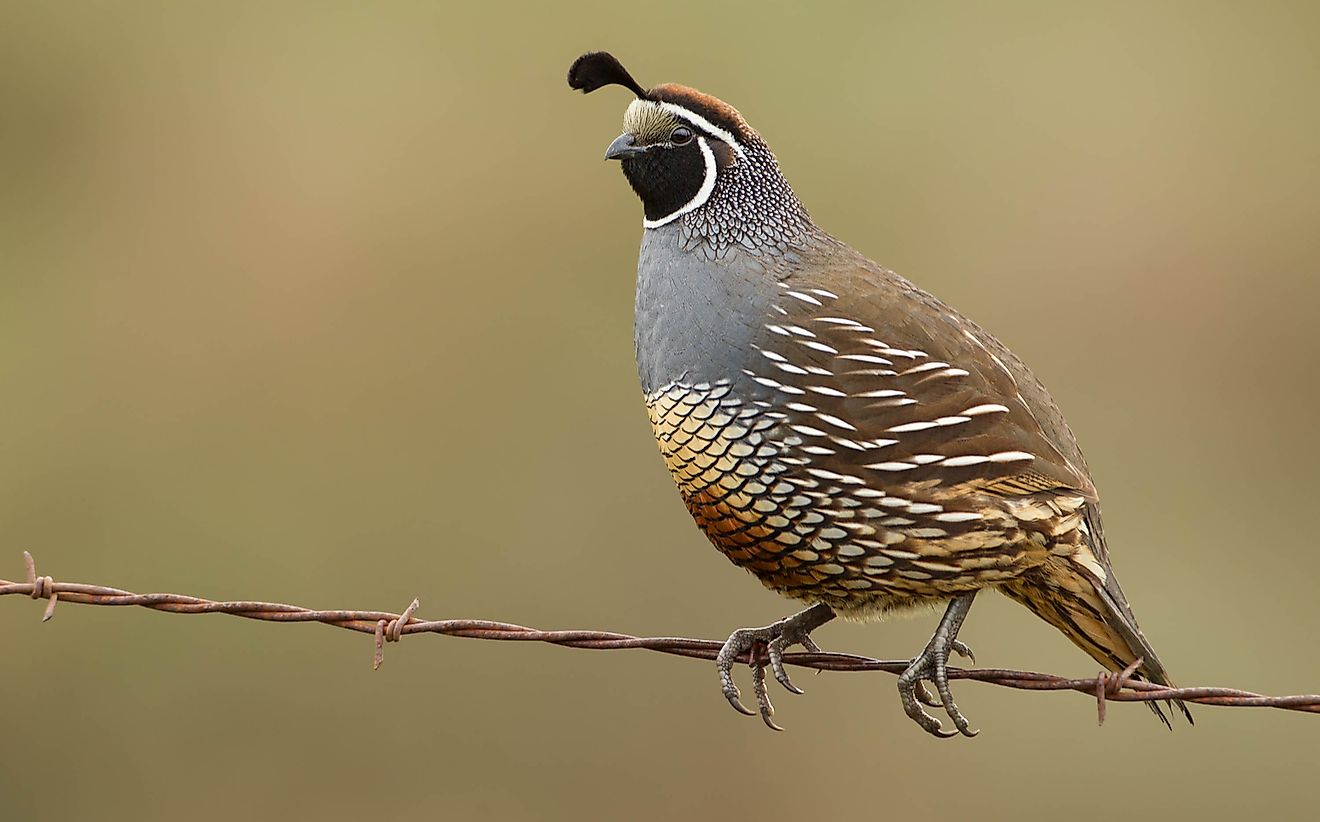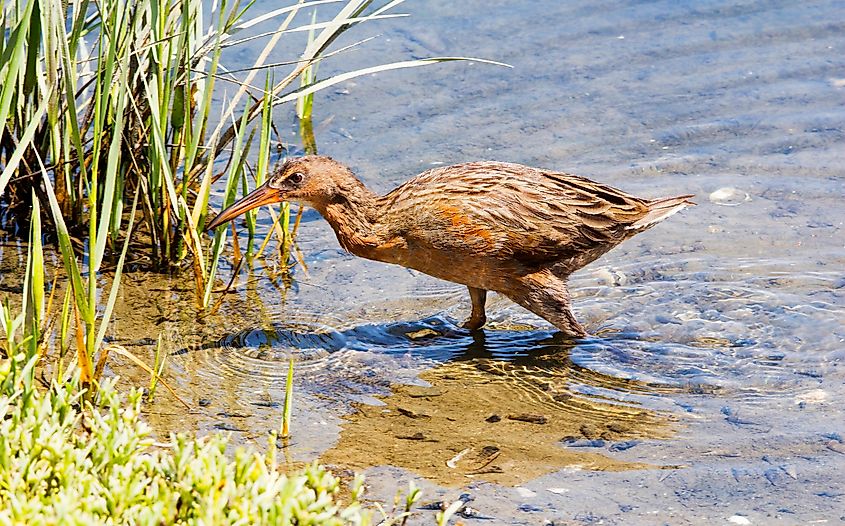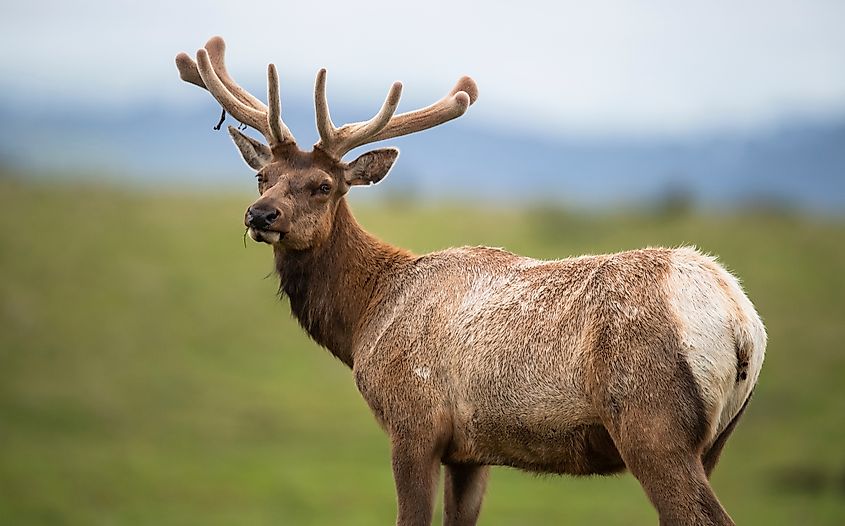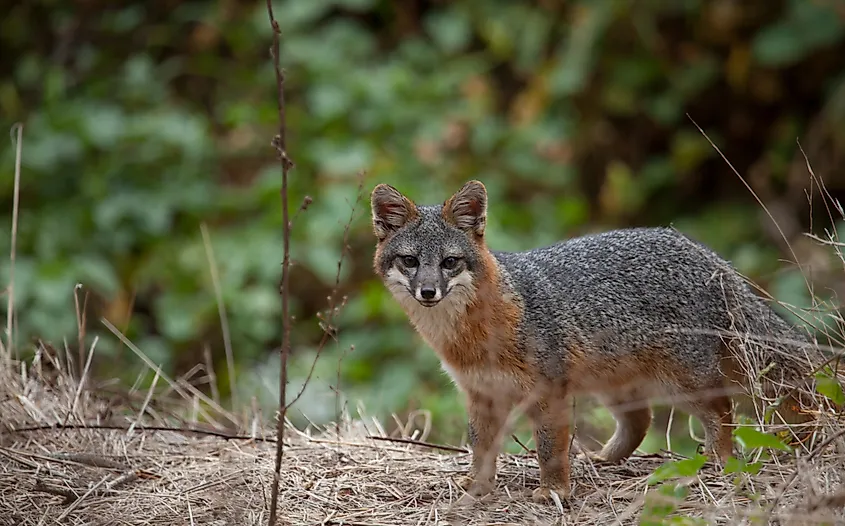What Animals Live In California?

The state of California has a wide range of habitats ranging from oceans to beaches, estuaries, wetlands, coastal meadows and hills, and Sequoia forests. Consequently, it is a hub for diverse endemic animal species and subspecies. The list of animal species in California is almost endless, but here are some of the most notable ones:
San Francisco Garter Snake
The San Francisco garter snake is scientifically known as the Thamnophis sirtalis tetrataenia. The snake is sleek and shy; possessing striking red and blue stripes along its length with black margins. The snake preys mostly on the red-legged frogs, juvenile bullfrogs and tree frogs. It spends most of its time hunting in the swampy vegetation and in the freshwater ponds. The population of garter snakes is estimated at 1,000 or even fewer. It is an endangered species in California.
California Newt
The California newt is an amphibian scientifically known as Taricha torosa. It is a coastal salamander with orange and brown colors. The newt’s length ranges from 5 to 8 inches. It mostly lives in forests and sometimes burrows in the soil underneath.During the rainy seasons, the newt moves out to open waters to mate. The laid eggs take 2- 6 weeks to hatch. The newts prey on ants, insects, and worms. When in danger, the California newt secretes a deadly neurotoxin that can cause death by respiratory failure. Just a mere picking of the newt with bare hands, especially with an open wound, may turn out to be fatal.
California Clapper Rail

The California clapper rail is a bird scientifically known as Rallus longirostris obsoletus. Its name is derived from the call it makes which sounds like clapping. California clapper rails are as tall as chicken. They are found in the salt marshes of Morro Bay and San Francisco bay. These birds feed on mollusks, insects, crustaceans, frogs and other small mammals. In recent times, the existence of the California clapper rail has been threatened in diverse ways. First, its preferred habitat which is the cordgrass and pickled wood in the state’s wetlands has been invaded by humans. Secondly, during the gold rush era, upon realization that the clapper rail was delicious, several restaurants in San Francisco and Oakland served it to visitors. These factors have greatly contributed to the decline in the population of this bird with the current statistics suggesting they could barely be about 1000.
The Golden Trout
The Golden trout is scientifically known as Oncorhynchus aguabonita. It is California’s state fish. The fish was first spotted in Kerr river drainage around Lake Isabella. It thrives well in fast-flowing cold and clear waters with their preferred water temperatures being 58-62 degrees Fahrenheit. The Golden trout fish is among the most beautiful fish in the world due to its rainbow colors. The fish has a red-reddish orange belly and lateral line, deep olive-green back, and white-orange dorsal fins. It feeds on insects (such as caddisflies and midges) and tiny freshwater shrimps among other prey. The survival of the Golden trout is threatened by overexploitation, competition with exotic species, and mismanagement.
California Quail
The California quail became the state bird of California in 1932. It is scientifically known as Callipela californica. The valley quail, as it is commonly known, is a relatively small ground-dwelling bird. It is smaller than a pigeon with distinctive curving plumes consisting of six feathers. The plumes are black in males and brown in females. California quail’s beak is black and white. These birds are highly sociable and gather in groups of up to 200 birds called coveys. The quail breeds in shrubby and woodland areas and lays between 6 and 28 eggs.
Tule Elk

The Tule elk is scientifically known as Cervus Canadensis nannodes. It is the smallest of the elk species that is endemic to California. The males weigh between 450 and 550 pounds whereas the females weigh between 375 and 420 pounds. The Tule elks were thought to be extinct. However, in 1874 a single pair was found in the tule marshes of Lake Buena Vista. Henry Miller allowed this pair to breed in his central valley ranch. Tule elks are currently estimated to be about 4000, a population that descended from the two pairs. They are currently confined in areas such as Point Reyes seashore region in the Bay area. There’s also a Tule Elk State Natural Reserve assigned for their protection.
Luminous Millipedes
The Luminous millipedes are about 4 cm in length and live in the southern parts of California. More specifically, they inhabit the oak and sequoia forests in the mountains and open grasslands. They glow in darkness, are blind, and produce poison cyanide. The glow helps the luminous millipedes to keep predators such as centipedes, rodents, and beetles at bay. These millipedes are beneficial in the ecosystem as they help in breaking down decaying plant matter.
Island Fox

The island fox lives in the Californian Channel Islands. They also inhabit shrubby or wooded areas. These foxes feed on plant items, sea figs, insects, crabs, deer mice, and beetles. They are highly territorial animals and communicate by barking and growling. The island fox is a monogamous animal that breeds only once a year. It has a gestation period of about 52 weeks. An island fox can live up to 15 years. It is scientifically known as Urocyon littoralis.
Golden Beaver
The golden beaver is scientifically known as the Castor Canadensis subauratus. It is considered to be the largest rodent in North America. Golden beavers are good swimmers which may be found around and in rivers, streams, and ponds. They are semi-aquatic, herbivorous animals. They are nocturnal which means that they sleep during the day and are mostly active at night. Beavers are monogamous and live in colonies. A mature beaver can live up to 20 years. Young beavers are threatened by wolves, bears, lynx, and otters.
Bat Rays

Bat rays are scientifically known as Myliobatis californica. They are popularly known for their eagle-like look which is a result of its wing-like pectoral fins. Bat rays are usually found in the muddy or sandy environments of Oregon all the way to the Gulf of California. They can grow up to 200 pounds and feed on small fish, crustaceans, and mollusks. Bat rays are often found in aquariums due to their positive response toward the human touch.











